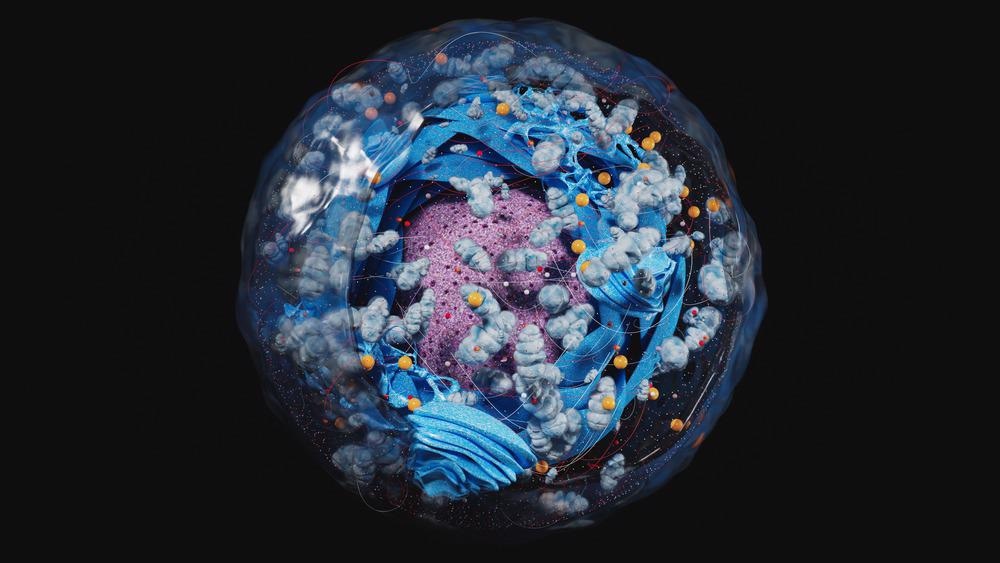Mitochondria is a cell organelle whose functions include regulating metabolic rate and aging. Aging also reduces mitochondrial membrane potential and results in decreased production of adenosine triphosphate (ATP), a primary source of cellular energy. Aging diminishes cellular activities due to pro-inflammatory reactive oxygen species (ROS).

Image Credit: CI Photos/Shutterstock.com
Scientists have reported that retinal photoreceptors harbor a high concentration of mitochondria. Therefore, eyesight problems due to aging have been related to a reduction in the functioning of mitochondria.
Human Photoreceptors and Aging
Photoreceptors are cells present in the eye's retina, which respond to light. These cells contain tightly packed photopigment, called rhodopsin, in the cell membrane. Tight packing of photopigment allows maximum absorption of light photons that reaches photoreceptors. The human retina possesses two photoreceptors, namely, rods and cones. The main function of rods is associated with scotopic vision, i.e., vision at low light levels. This cell is responsible for black and white vision. Cones are responsible for photopic vision or vision at higher light levels. Unlike rods, cones are capable of color vision.
Scientists have reported that functional aging of the human retina occurs around 40 years of age. This is because 30% of central rods progressively die. Additionally, even though the cones exist, their functionality reduces. Defective mitochondria result in declining eyesight with age and have been associated with several causes of blindness.
Improvement in Mitochondrial Function
Studies have shown that exposure to long wavelengths of light, ranging between 650 and 900 nm, improves mitochondrial function in animals. The treated mitochondria increased ATP production and reduced the generation of ROS. Mitochondrial treatment with long wavelengths of light also decreases the pace of aging of cells and cell death in the retina. Both rat and mice models comprising aged retina improved electrophysiological responses after mitochondrial treatment with long-wavelength light.
Scientists believe that the improvement in vision has been due to decreased nanoscopic interfacial water layer viscosity around ATP rota pumps, increasing their efficiency. A decrease in mitochondrial density impacts the energy demand of the nervous system as neuronal membrane pumps consume large amounts of ATP. This is the reason why aging affects neural pump efficiency.
An increased ATP availability optically has improved the aging pattern in mammals and extended the lifespan in insects. A prior study on flies suggested that mitochondria generate the majority of ATP in the mornings. However, very little evidence is available on how long-wavelength light treatment impacts human vision.

Image Credit: Sanem Ozkan/Shutterstock.com
A New Treatment
Scientists have performed a unique experiment to improve fading eyesight that involved shining a red light into the eyes for a few minutes. The main focus of this treatment was to enhance mitochondrial activity, which would increase ATP production inside cells.
Initially, this experiment was conducted on twenty-four people subjected to one short exposure to light. Interestingly, an improved color vision was observed for several days. Previous studies using animal models and cellular experiments have shown that near-infrared light and deep red light boost mitochondrial function. These wavelengths improve the functioning of ATP synthase pumps of mitochondria, which manufacture ATP.
Glen Jeffery and his colleagues at University College London introduced deep red light (670 nm) to be absorbed by water molecules surrounding the ATP pump. This phenomenon makes the pump's water molecule less viscous and allows the pump to rotate faster. Jeffery explained this phenomenon by using the analogy of heating jam to make it easier to stir.
Jeffery's research team performed an experiment where two groups, comprising individuals aged between 37 and 70, were exposed to red light. One group was treated with red light in the morning, whereas the other group (control group) was treated with red light in the afternoon. All the participants were subjected to weak deep red light shining at their eyes for 3 minutes. After three hours, participants' vision was tested by asking them to identify letters shown on a similar-colored background.
Chroma Tests were conducted to assess the participant's ability to identify colored letters with very low contrast. This test is also known as the color contrast test. The color contrast test measures the red-green contrast (protan axis) and the blue-yellow light (tritan axis). Researchers focussed on color vision because the natural tendency of rod cells is to die with age; however, cones live with less efficiency.
Researchers observed that when participants received one treatment between 8 am and 9 am, their performance in eye testing (color contrast test) improved by 12 to 17 percent, compared to their ability to distinguish between colors before the treatment. Interestingly, ten members of the treated group were re-tested, and their ability to distinguish color remained 10 percent better than in the untreated state. However, no significant improvement in vision was observed in the control group who received red light treatment in the afternoon.
Other groups of researchers have also reported that red light treatment could improve both age-related macular degeneration and deteriorating eyesight due to diabetes. Jeffery's research team introduced light energy using an LED torch (8mW/cm2). This energy is safe for human eyes. At present, they are focused on designing affordable deep red-light eye therapies.
The Next Step
Louise Gow from the Royal National Institute of Blind People stated that although the outcome of red-light treatment is exciting, more studies with bigger sample sizes are required to provide robust evidence to support the innovative treatment. Janis Eells from the University of Wisconsin-Milwaukee stated that this treatment could be beneficial for other conditions as well because boosting mitochondria could improve the efficiency of many cell types.
For instance, many animal studies on brain injury (e.g., stroke, Parkinson's disease, etc.) have indicated that shining deep red or near-infrared light on the head improved the condition.
Further Reading